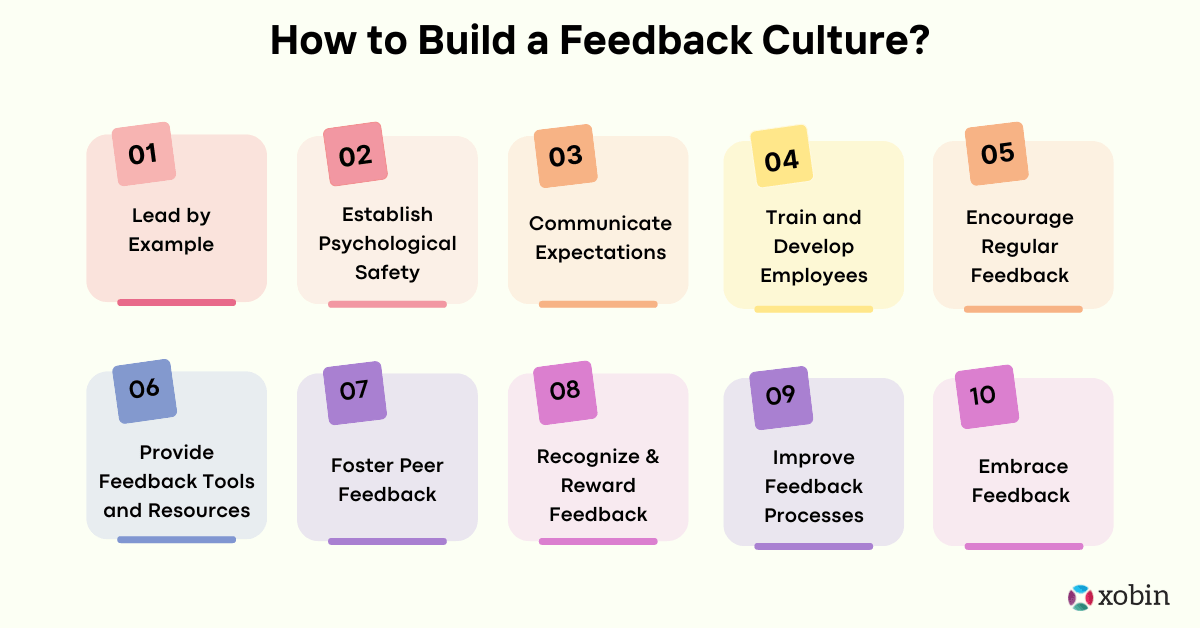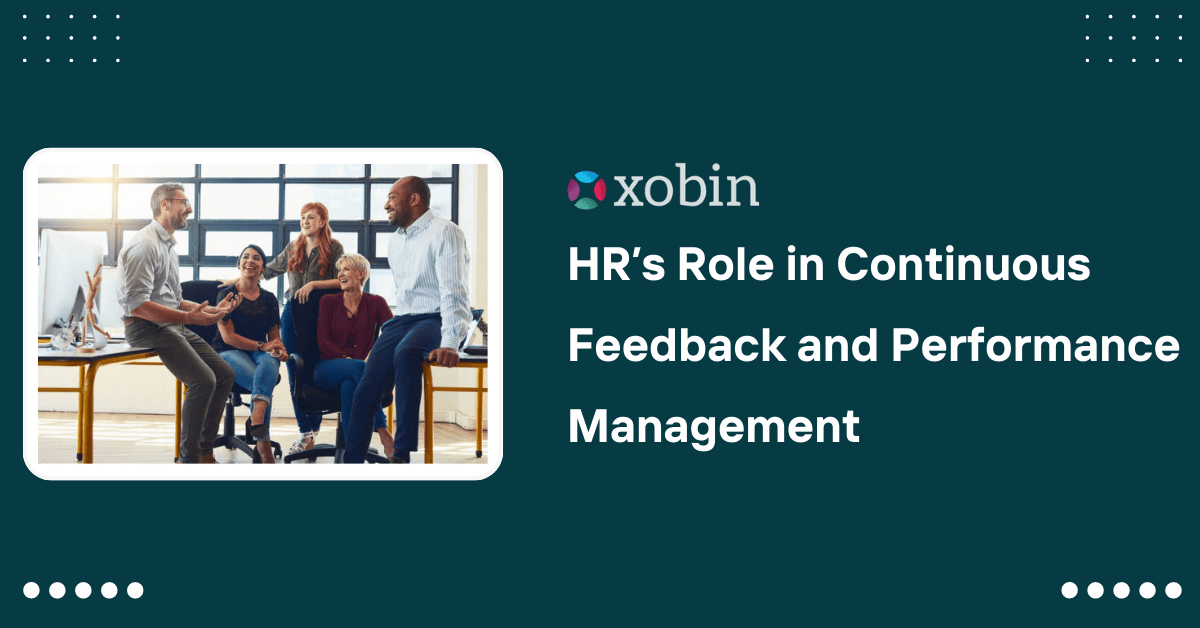When employees do not perform well at work, it can affect how well your business delivers products and services to customers. It is also something that can have a negative impact on your company’s financials. To drive continuous improvement, HR plays a crucial role in streamlining feedback and monitoring employee progress. By implementing structured feedback systems and real-time evaluations, HR ensures employees receive the right guidance to enhance their performance. We take a closer look at the role that HR plays in promoting both improvements in performance and continuous feedback inside the company.
Table of Contents
Link Between Continuous Feedback And Employee Performance
Employees heavily rely on feedback in the modern workplace. If they are not told how they are doing, employees may feel uncertain about whether they are meeting the expectations of their job and how they perform. When it comes to performance management and driving better productivity at work, it’s important to provide feedback to employees and allow them to join in on the conversation.
When you provide employees with feedback on their work and the tasks they are assigned, then it helps them better understand how they are doing. Even when negative feedback is provided, it can still help to drive performance improvement in these employees. You tell them what they did wrong, but also provide them with an overview of the fact that there is an opportunity to grow and improve.
How to Build a Feedback Culture?
A feedback culture is an essential aspect of fostering growth, development, and high performance within organizations. It creates an environment where open communication, constructive criticism, and continuous improvement are valued and embraced. To build a feedback culture, organizations and HR professionals can implement the following strategies:

Lead by Example
HR professionals and leaders should model the behavior they want to see in others. They should actively seek feedback, be open to receiving criticism, and demonstrate a willingness to learn and improve. By setting the tone and showing vulnerability, they encourage others to do the same.
Establish Psychological Safety
Create a safe and supportive environment where employees feel comfortable sharing their thoughts and ideas without fear of retribution or judgment. Encourage open dialogue, respect diverse perspectives, and foster an atmosphere of trust. When employees feel safe, they are more likely to provide honest feedback and engage in constructive conversations.
Communicate Expectations
Clearly communicate the expectations around feedback and its importance within the organization. Provide guidelines on giving and receiving feedback, emphasizing the need for constructive and respectful communication. Ensure that employees understand that feedback is not about personal attacks but a means for growth and improvement.
Train and Develop Employees
Provide training and development opportunities on effective feedback techniques, active listening, and communication skills. Equip employees with the tools they need to deliver feedback constructively, focusing on specific behaviors and their impact. Offer resources and workshops to enhance feedback capabilities at all levels of the organization.
Encourage Regular Feedback
Promote the practice of regular feedback exchanges among team members, colleagues, and managers. Encourage employees to provide both positive and constructive feedback to their peers, recognizing and celebrating achievements and offering suggestions for improvement. Implement mechanisms such as feedback sessions, pulse surveys, or anonymous feedback and review platforms to facilitate ongoing feedback.
Provide Feedback Tools and Resources
Offer employees access to tools and resources that facilitate the feedback process. This could include feedback templates, conversation guides, or technology platforms that streamline the feedback exchange. Make it easy and convenient for employees to give and receive feedback, ensuring that the process is integrated into their daily work routine.
Foster Peer Feedback
Encourage a culture of peer-to-peer feedback where employees feel empowered to provide feedback to their colleagues. Implement practices such as peer reviews, team feedback sessions, or buddy systems that facilitate constructive feedback among peers. This not only distributes the responsibility for feedback but also strengthens teamwork and collaboration.
Recognize and Reward Feedback
Acknowledge and reward individuals or teams that actively seek and provide feedback. Highlight success stories where feedback has led to positive outcomes or improvements. Celebrate a culture where feedback is recognized as a valuable contribution to the organization’s growth and success.
Continuously Improve Feedback Processes
Regularly evaluate and refine feedback processes to ensure they remain effective and aligned with organizational goals. Gather feedback from employees about their experiences with the feedback culture and make necessary adjustments. Continuously seek ways to improve the feedback infrastructure, tools, and resources available to employees.
Embrace Feedback as a Learning Opportunity
Promote the mindset that feedback is not a personal attack but an opportunity for growth and development. Encourage employees to approach feedback with an open mind, actively seeking opportunities to learn and improve. Provide coaching and support to help individuals translate feedback into actionable steps for professional growth.
By implementing these strategies, organizations can foster a feedback culture that encourages open communication, continuous improvement, and a shared commitment to personal and organizational growth. Building a feedback culture requires consistent effort and commitment from leaders, HR professionals, and employees at all levels, but the rewards in terms of improved performance, engagement, and employee satisfaction are well worth the investment.
Where Does HR Fit Into Continuous Feedback And Performance Management?
The human resource department in your company needs to regularly communicate and interact with employees. When employees have concerns, they can raise these issues with HR, who can then attempt to solve them or address any problems they are able to identify.
This brings us to continuous feedback and essentially employee performance matters. We take a closer look at the specific roles that HR plays in these areas.
Developing Feedback Channels
Employees should be provided with continuous feedback on their performance, as this can help to drive greater engagement and serve as a motivational element. HR needs to develop feedback channels that make it easy for employees to gain access to performance reports and other details that tell them how well they are doing their job and meeting the expectations of the company.
Training and Development
When looking at work performance improvement examples that were developed during goal setting and employees are not on par, then it’s important for HR to identify the gaps. This can often include a gap in knowledge and skills. For example, improvements or changes in technology might be something that the employees still need to adapt to. Providing access to training and development is an effective way for HR departments to counter these problems and support the work management project.
Performance Management
HR may also be given the role to develop and implement performance management systems. Choosing the right performance management software at this point is important, such as the platform that Profit.co can provide. This can streamline the process of implementing a performance management system and offer a wider variety of tracking and measurement tools, specifically tailored to work management projects.
The HR staff can then also use factors like Key Performance Indicators (KPIs) and other metrics to help them evaluate the progress of employee performance, while also keeping track of the management system they have implemented.
To get a better idea of what they can do, HR can also take a closer look at work performance improvement examples.
The Benefits of Continuous Feedback
Research shows that 65% of employees want to receive more feedback on what they do in the workplace. Furthermore, when feedback is provided to employees on a regular basis, there is an average reduction in turnover rates of 14.9%. Apart from these statistics, it is also important to note that approximately 40% of employees are less engaged with their work and the workplace if they do not receive enough feedback on their performance.
Now, let’s turn to the benefits that continuous feedback can provide. In one report, it was found that the employees who have the best level of engagement and performance at work are those who get feedback from HR or other departments on one or more occasions every week. The right performance management software can help to deliver these benefits efficiently.
It is important to realize that continuous feedback benefits many parties. The employee gets the ability to see how they perform and get details about anything they are doing wrong. This helps them optimize their operations and how they go about their daily routine at work. This also benefits the entire team and, in the end, can drive greater productivity for the entire company. This is something that can certainly help with business growth.
Conclusion
There are several factors that go into helping to improve performance management among employees. It is possible to use certain metrics to determine how they are doing, but it is also crucial to get HR involved in the process of feedback and performance. HR can help to implement programs that offer an easy platform to provide feedback for employees, while also offering training when there are educational gaps.






